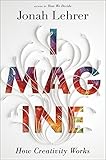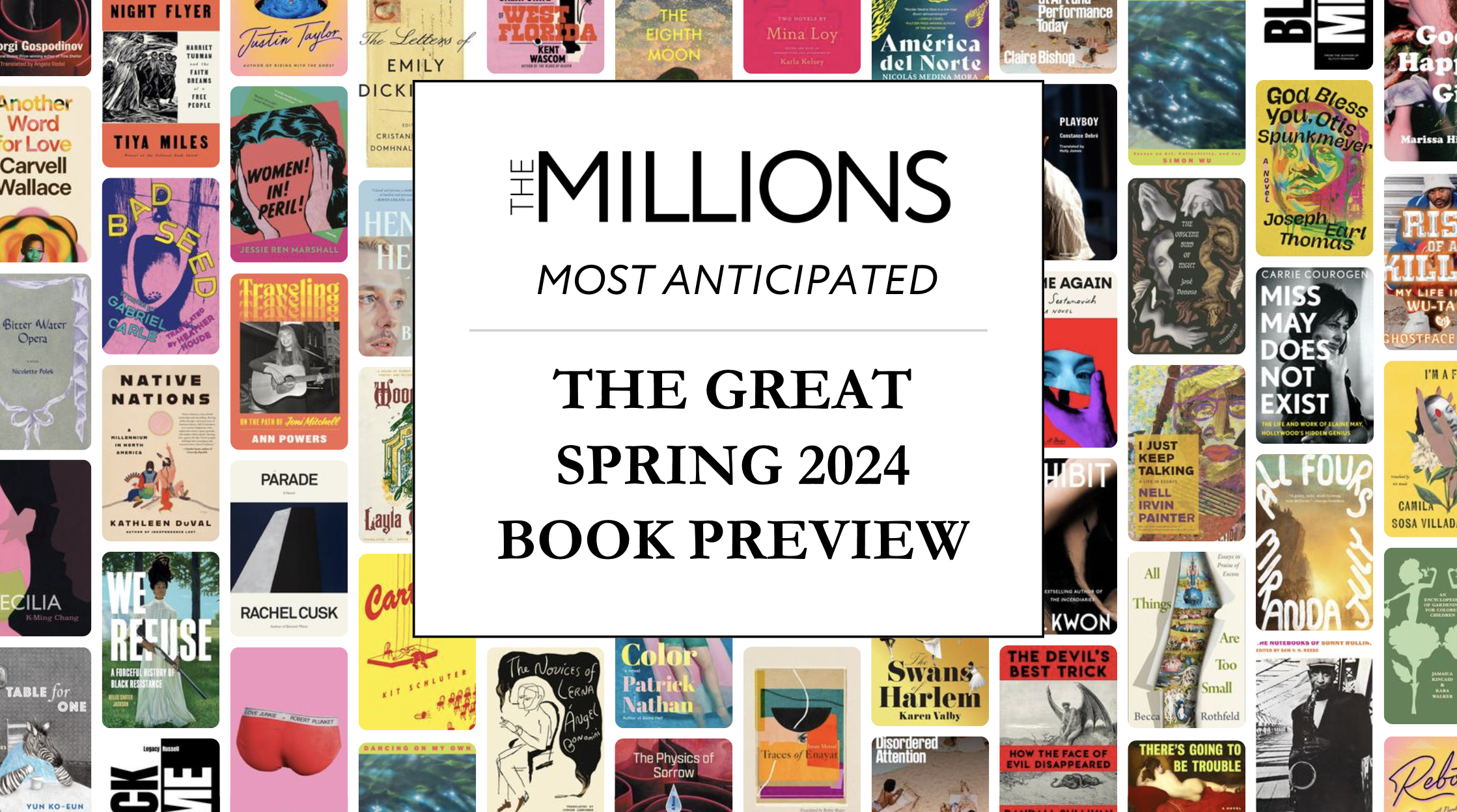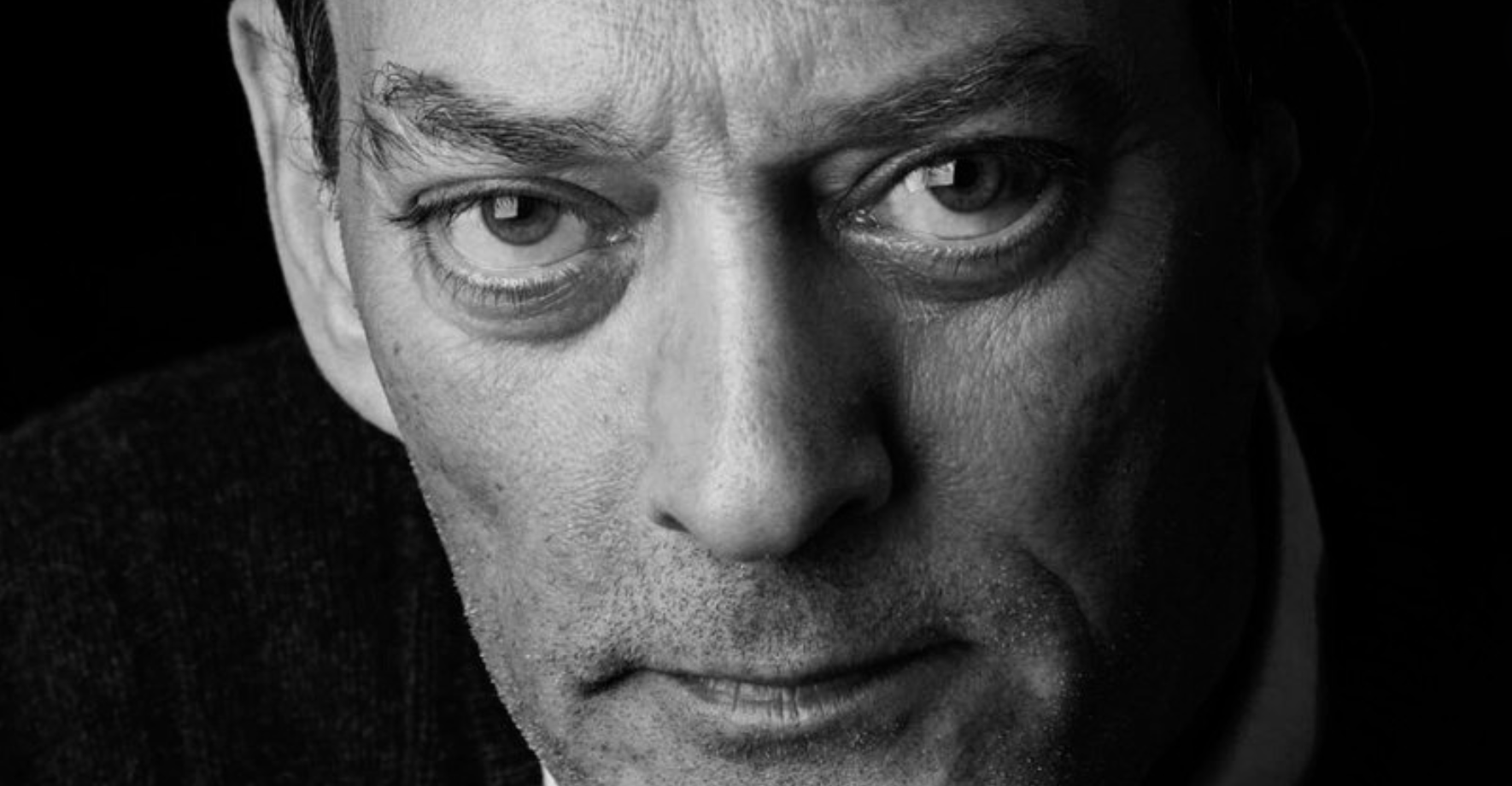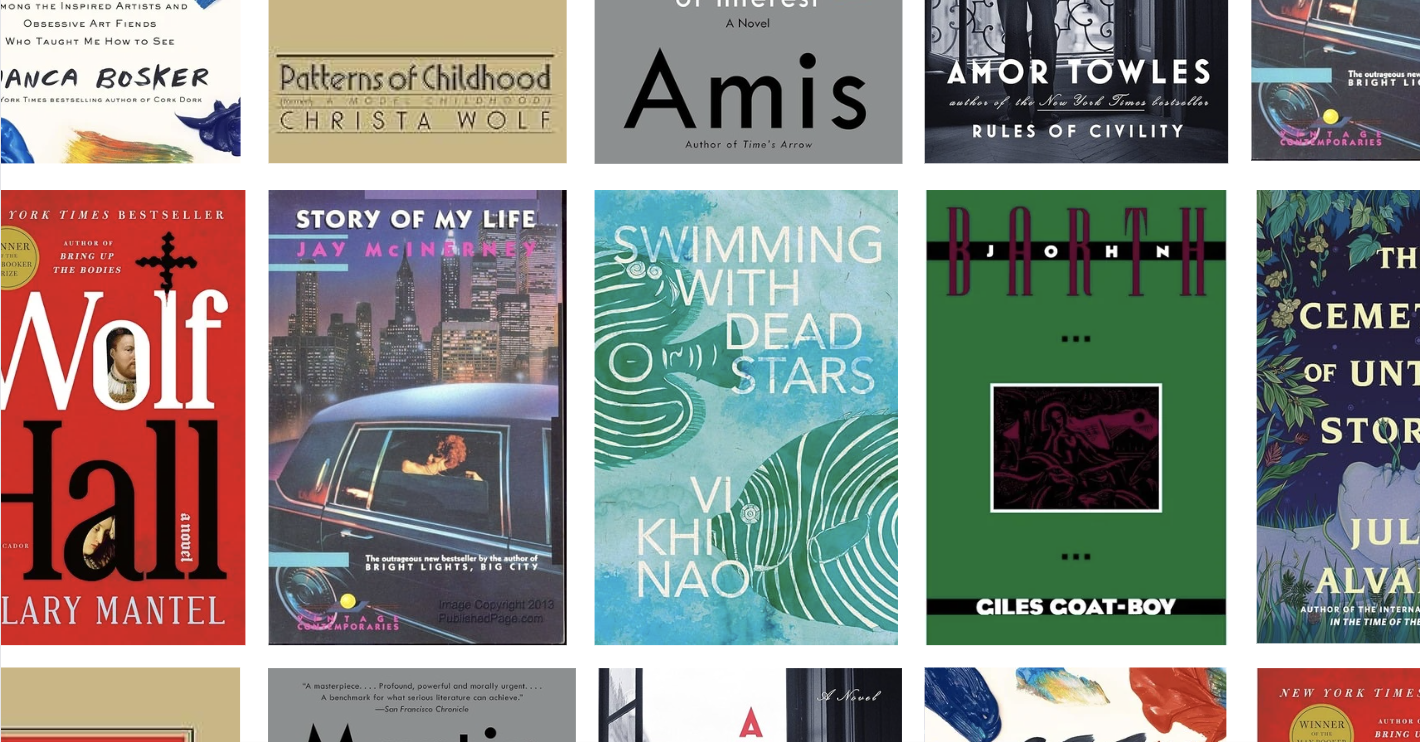1.
 Not too long ago, the idea that “you are your brain” was the revolutionary mantra of a handful of scientists, but today it raises hardly an eyebrow among the general public. The brain has become, for many, synonymous with the biological machinations of the self, and the self-knowledge promised by neuroscience has ignited a hunger to understand how it weighs in on age-old questions: Do we have free will? How do we make decisions? What happens when we fall in love? Why do we make art? Imagine, Jonah Lehrer’s polymathic new book is poised to feed this hunger. Blurring the lines between science writing, self-help, and cultural criticism with virtuosic ease, Imagine explores fields as disparate as neuroscience, sociology, and urban planning with the promise not only to explain how creativity works, but how you, too, can use these secrets to unlock your own creativity, and how we can collectively build a more creative culture.
Not too long ago, the idea that “you are your brain” was the revolutionary mantra of a handful of scientists, but today it raises hardly an eyebrow among the general public. The brain has become, for many, synonymous with the biological machinations of the self, and the self-knowledge promised by neuroscience has ignited a hunger to understand how it weighs in on age-old questions: Do we have free will? How do we make decisions? What happens when we fall in love? Why do we make art? Imagine, Jonah Lehrer’s polymathic new book is poised to feed this hunger. Blurring the lines between science writing, self-help, and cultural criticism with virtuosic ease, Imagine explores fields as disparate as neuroscience, sociology, and urban planning with the promise not only to explain how creativity works, but how you, too, can use these secrets to unlock your own creativity, and how we can collectively build a more creative culture.

 The book ranges across a dizzying array of examples of the creative process, from Bob Dylan to the team at Pixar to the tech boom in Tel Aviv, creating a mash-up of anecdotes, science reporting and associative interjections from the humanities. In the second chapter alone, we get the guy who invented Scotch Tape; a psychologist who uses EEG to study the brain while people solve puzzles; a neuroscientist who studies insight; a passage from David Hume; a neurologist who is studying daydreaming; the invention of Post-Its; the classic children’s book Harold and the Purple Crayon…and the list goes on. To say that the density and diversity of sources marshaled here are impressive would be a massive understatement. As in Proust Was a Neuroscientist and How We Decide, Lehrer has invited an eclectic mix of guests to his dinner party, and getting them all in the same room to see what happens is a rare achievement. But his real talent lies in the way he plays all these sources off each other in order to build a coherent argument, leaping from the story of how Barbie dolls were born when an American housewife saw a pornographic doll in the window of a German cigar shop to how seeing ones’ work with fresh eyes is “one of the central challenges of writing” to the neural pathways involved in reading and writing in order to demonstrate that “the only way to be creative over time — to not be undone by our expertise — is to experiment with ignorance, to stare at things we don’t fully understand.” To cap off this particular moment, Lehrer offers a toast to the poet Samuel Coleridge, who said he attended public chemistry lectures in London to “renew my stock of metaphors.”
The book ranges across a dizzying array of examples of the creative process, from Bob Dylan to the team at Pixar to the tech boom in Tel Aviv, creating a mash-up of anecdotes, science reporting and associative interjections from the humanities. In the second chapter alone, we get the guy who invented Scotch Tape; a psychologist who uses EEG to study the brain while people solve puzzles; a neuroscientist who studies insight; a passage from David Hume; a neurologist who is studying daydreaming; the invention of Post-Its; the classic children’s book Harold and the Purple Crayon…and the list goes on. To say that the density and diversity of sources marshaled here are impressive would be a massive understatement. As in Proust Was a Neuroscientist and How We Decide, Lehrer has invited an eclectic mix of guests to his dinner party, and getting them all in the same room to see what happens is a rare achievement. But his real talent lies in the way he plays all these sources off each other in order to build a coherent argument, leaping from the story of how Barbie dolls were born when an American housewife saw a pornographic doll in the window of a German cigar shop to how seeing ones’ work with fresh eyes is “one of the central challenges of writing” to the neural pathways involved in reading and writing in order to demonstrate that “the only way to be creative over time — to not be undone by our expertise — is to experiment with ignorance, to stare at things we don’t fully understand.” To cap off this particular moment, Lehrer offers a toast to the poet Samuel Coleridge, who said he attended public chemistry lectures in London to “renew my stock of metaphors.”
Imagine uses the same mash-up method that was so successful in How We Decide, but the science of creativity simply isn’t as developed as the science of decision-making. Because of this, it turns out that Lehrer’s tried-and-true method doesn’t work quite as well. The difficulty with pinning down creativity — scientifically or otherwise — becomes obvious when you consider the diversity of anecdotal examples in the book. Is writing a song comparable to coming up with new uses for glue or solving a puzzle that has only one correct answer? Is the person who writes twenty cookie-cutter novels engaged in the same activity as the person who writes one book so unprecedented that it changes the trajectory of literature? Are any two creative processes really the same? At most, it seems that one could point out patterns, but Lehrer boldly sets his sights on formula.
Imagine argues that “creativity is a catchall term for a variety of distinct thought processes” and that by understanding these processes we can all learn to be more creative. The more people you talk with, and the more diverse those people are, the better. Companies that wish to encourage creativity should have everyone use a bathroom in a centralized place, like Pixar does. If we want to be a more creative society, we should lighten up on copyright laws and share ideas, like they do in Silicon Valley and Tel Aviv. The scope widens until, by the end, Lehrer is advocating policy changes in areas such as education, copyright law, and immigration. He argues, for example, that because immigrants submit a disproportionate number of patent applications in the U.S., it seems that, as measured by the metric of patents, at least, more immigrants could make America a more creative country.
Trumpeted as “something of a popular science prodigy” by The New York Times, Lehrer has become a translator and ambassador, someone readers trust to explain what is going on in all those ivory towers full of beakers and cell cultures and genetically-engineered mice. Besides his two hugely successful books, he is a contributing editor at Wired, a frequent guest on WNYC’s RadioLab, a regular contributor to The New Yorker, and a science columnist for The Wall Street Journal. For many readers he is the face of science in popular culture. And for good reason. He has repeatedly proven his skill at wrestling complex scientific ideas into nuanced and accurate discussions accessible to non-scientists. Take, for example, his excellent Wall Street Journal column in which he writes insightfully about the limitations of fMRI, a widely used brain-imaging technology with difficult-to-interpret data that ignites heated disputes both inside and outside scientific circles. Lehrer is also an expert and captivating storyteller, and Imagine aims high in grappling with the extremely difficult task of communicating subtle and complex ideas in an engaging way.
But Lehrer’s role as liaison comes with a degree of responsibility; most readers trust that he is explaining science accurately and drawing reasonable conclusions based on the data at hand. Lehrer’s polished style, affable enthusiasm, and obvious intelligence make it tempting not to question the science as he sees it. All the more troubling, then, that right from the outset of Imagine there are signs that science may be taking a backseat to story:
Most cognitive skills have elaborate biological histories, so their evolution can be traced over time. But not creativity — the human imagination has no clear precursors…The birth of creativity, in other words, arrived like any insight: out of nowhere.
If there are any truths in biology, one is that nothing arrives “out of nowhere.” For almost the whole recorded history of science, people believed that we may be the exception. For years, scientists thought we were different because we use tools. Not so, as it turned out. Chimpanzees have us there. And gorillas and orangutans and some other primates. And birds. And elephants. And a few bottlenose dolphins. Even ants use grain to carry honey. Until very recently, many scientists thought language set us apart, but in the past ten years, researchers have observed precursors to human speech in primate vocalizations and striking similarities between how infants learn to speak and songbirds learn to sing. Even self-awareness, a treasured feature of human consciousness, is no longer considered unique to humans. It’s tempting to think that we are special, but today most researchers agree with Darwin’s eloquent observation that humans are animals, too; we are different in degree rather than kind. There’s no reason to think that creativity will be the exception.
The real problem is that claiming creativity’s exceptional status makes for a better story: if creativity is what sets us apart from the animals, understanding this faculty is tantamount to unlocking the mystery of who and what we are. As Lehrer writes, “Until we understand the set of mental events that give rise to new thoughts, we will never understand what makes us so special.” This claim raises the stakes for the book. The problem is, it’s probably just not true.
2.
These few sentences set off some unexpected alarm bells, so we decided to take a closer look at some of the science upon which Imagine is built, specifically neuroscience, as that’s what Lehrer is best known for and where his greatest expertise lies. In the fourth chapter, for example, Lehrer assembles an impressive array of anecdotes and neuroscience results to explain why “letting go” is “an extremely valuable source of creativity.” “The act of letting go,” he declares, “has inspired some of the most famous works of modern culture, from John Coltrane’s saxophone solos to Jackson Pollock’s drip paintings.” So how does letting go, Lehrer asks, lead to creativity? “The story begins in the brain,” he claims, and turns to a neuroimaging experiment in which jazz pianists were asked to improvise new tunes while in a brain scanner. During improvisation, the scanner picked up a surge of activity in a brain area previously linked to self-expression. At the same time, the scientists also observed a sharp decrease in brain activity in an area previously linked to impulse control. Lehrer concludes, “This suggests that the musician was engaged in a kind of storytelling, searching for the notes that reflected her personal style…The musicians were inhibiting their inhibitions, slipping off those mental handcuffs.” At first pass, this interpretation sounds pretty convincing: the self-control center of the brain shuts down to clear the path for unfettered self-expression.
Except that it’s impossible to draw that conclusion from the data at hand. This is an example of a common logical fallacy that plagues the interpretation of neuroimaging data. Say you notice a crowd of people at your neighbor’s house one night, and then find out she is throwing a party. You can correctly conclude that whenever your neighbor throws a party, there will be people at her house. On another night, you again notice a crowd of people at her house, and you conclude she is throwing a party — but this time you’re wrong. She is hosting a church group. While you can conclude that a party means there will be people, you cannot conclude that people means a party.
This reasoning fails because brain regions, like houses, have many functions. If you scan the brains of 100 people while they add 2+2, and in every case the same little patch of cortex jumps into action, it’s safe to infer that the cognitive act of adding 2+2 is related to activity in that brain region. So far so good. (What the region might actually be doing — adding, focusing on the number 2, catching errors — is whole separate problem). It’s tempting to say, then, that every time researchers observe that little patch of cortex lighting up, it must mean that the person in the scanner is engaged in adding 2+2. After all, it’s the 2+2 part of the brain, right? That’s where intuition can lead you astray. There is not a measurable one-to-one mapping between any brain region and any particular cognitive process; the same little patch of cortex is likely involved in multiple functions, just as a house can be filled with people for many different reasons. So when you see the patch of cortex light up under the scanner, you can’t say the person is adding 2+2. Likewise, if a brain region previously linked to “self-expression” lights up while improvising music, you can’t say — as Lehrer does — that the musician was “engaged in a kind of storytelling.”
This claim is all the more surprising because Lehrer is clearly familiar with this logical fallacy. In the Wall Street Journal column about fMRI data mentioned earlier, he offers an elegant discussion of this very problem:
Consider an op-ed piece recently published in the New York Times, which used fMRI results to demonstrate, purportedly, that people “literally love their iPhones.” The evidence? When the researchers showed subjects a video of a ringing cellphone, a part of the brain called the insula exhibited a spike in activity. Because previous studies have linked the insula with feelings of love, the authors concluded that the gadget had become a “romantic rival” for husbands and wives.
But here’s the problem: The insula is also activated by feelings of disgust and bodily pain. It plays an important role in coordinating hand movement, maintaining balance and monitoring bodily changes. In fact, activity in the insula has been implicated in nearly a third of all fMRI papers. Because the brain is such a vast knot of connections, it’s often impossible to understand what’s happening based on local patterns of activity. Perhaps we’re disgusted by our iPhones, or maybe the insula is just preparing the fingers to move. The pretty picture can’t reveal the answer.
So what’s going on? It’s baffling, really, that in Imagine Lehrer makes statements so similar to ones he thoroughly discredits in his column.
And the problems continue to arise. Near the end of the same chapter, Lehrer presents what appears to be the most convincing piece of evidence yet that inhibiting self-control enhances creativity. He reports a study in which the researcher used a harmless technique called TMS to disrupt brain activity in regions previously implicated in impulse control while the subjects drew sketches of animals. Before TMS, Lehrer reports that their drawings were “crude stick figures.” But during TMS, they exhibited “strange, new talents.” Their figures were “suddenly filled with artistic flourishes.” The section concludes with the comforting bromide that we all have inner artists, if only the brain’s inhibitory mechanisms wouldn’t “constantly hold back our latent talents.”
We were curious to see these “before” and “after” drawings, so we looked up the study. Upon viewing the drawings we felt a bit misled by Lehrer’s claim that dampening activity in the brain area he connects to impulse control led to “strange, new talents.” These before and after drawings, for example, seem to be just slightly different versions of a horse:

Savant-like skills exposed in normal people by suppressing the left fronto-temporal lobe. Allan W. Snyder, Elaine Mulcahy, Janey L. Taylor, D. John Mitchell, Perminder Sachdev, and Simon C. Gandevia, Journal of Integrative Neuroscience, Vol 2, No. 2, 149-158, © 2003, World Scientific.
One might even argue that the saddle in the “before” drawing on the left represents an “artistic flourish” absent in the “after” drawings on the right. In the paper, even the researchers themselves did not claim to have observed any great shift in artistic performance. They concluded that the technique “did not lead to a systematic improvement in naturalistic drawing ability,” although the drawings did show a “change of scheme or convention.” These less-than-definitive results, coupled with the fact that the details of how TMS affects brain activity are poorly understood, renders any hypothesis about this brain area and “creativity” speculative. The researchers do argue for such a link elsewhere, and even if this unproven hypothesis turns out to be true, to say that this study supports the chapter’s claims that “the timid circuits of the prefrontal cortex keep us from risking self-expression” is still problematic. The book is representing speculation as fact. While isolated moments like these may or may not be indicative of a larger pattern, they do raise doubts about both how science is represented throughout the book and the way it is used to support Lehrer’s claims.
If dubious interpretations of scientific data appeared only once in Imagine, it might be a worrisome fluke; but they appear multiple times, which is cause for real concern. Lehrer steps over the line again when connecting amphetamine use to creativity. He states that “Because the dopamine neurons in the midbrain are excited…the world is suddenly saturated with intensely interesting ideas.” Such definitive statements imply that neuroscience has already charted a causal course from neurotransmitter chemistry to a complex cognitive process — which simply isn’t true. That it should have come from a writer who so clearly has the ability to write about science critically and intelligently still comes as a bit of a surprise.
3.
All writers who translate neuroscience for the general public today work under a tremendous pressure to provide easy answers. And it’s not just writers who feel this pressure. So do scientists. It’s possible that Imagine is reflecting the sometimes unsavory habits of scientists who are worried about getting the sort of results that will ensure the millions of dollars in funding necessary to continue their research and move forward in their scientific careers. These habits often bleed over into the way scientists relate their work to journalists. The researcher who had subjects draw the “before” and “after” horses was quoted in The New York Times as calling TMS “a creativity-amplifying machine.” This sort of comment implies a causal link that has not yet been scientifically established, and it can tempt journalists into overstatement. Nevertheless, it is the job of the science writer to represent science as it is, to report on the often ambiguous reality of the scientific process — not to suggest certainty where it does not exist, even if it may seem more appealing to readers.
Everyone is looking for answers. By understanding the brain, the thinking goes, we can better understand ourselves and therefore change — our habits, diets, workplaces — in order to be better, happier versions of ourselves. This promise fuels neuroscience’s great popular appeal. However, while today’s neuroscience offers a deeper understanding the brain than ever before, it is still incomplete. It is far from providing the answers, or advice, that readers might find most satisfying. In the introduction, Imagine promises to deliver “what creativity is…how creativity works” and how “we can make it work for us” by revealing different types of creativity at work in different regions of the brain. This promise defies the reality of current brain science: despite the incredible progress of the past century, scientists really know very little about how the organ works, and can only postulate how neural mechanisms might be related to mind and behavior. People are looking, too soon, to neuroscience for answers.
We need good translators of science to the general public, and Lehrer has the public’s ear and the public’s trust. He is at his best when putting his considerable talents to the task of telling a story that is true according to the facts as we know them, rather than telling a story people want to hear.









